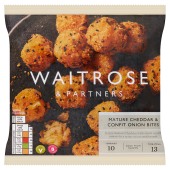Shop for your Groceries Online
0 added
Item price
£2.00Price per unit
45.5p/100g0 added
Item price
£14.20Price per unit
£17.75/kg0 added
Item price
£2.00Price per unit
45.5p/100g0 added
Item price
£15.00Price per unit
£20/litre0 added
Item price
20p each est.Price per unit
£1.10/kg0 added
Item price
10p each est.Price per unit
70p/kg0kg added
Item price
£2.65Price per unit
per kg0 added
Item price
16p each est.Price per unit
£1.05/kg0 added
Item price
£2.25Price per unit
37.5p each0 added
Item price
£6.00Price per unit
£15/kgChristmas made easy with Waitrose Entertaining
Prepped and oven-ready, our Food Made to Order range means more family time, less kitchen time. Preorder your full Christmas dinner by 15 December for delivery or collection between 20 and 24 December.
0 added
Item price
£2.25Price per unit
33.3p each0 added
Item price
£2.25Price per unit
37.5p each0 added
Item price
£3.00Price per unit
£25/kg0 added
Item price
£2.75Price per unit
£15.28/kg0 added
Item price
£2.75Price per unit
£13.75/kg0 added
Item price
£6.00Price per unit
£23.81/kg0 added
Item price
£8.00Price per unit
£19.05/kg0 added
Item price
£6.00Price per unit
£20.69/kg0 added
Item price
£8.00Price per unit
£27.59/kg0 added
Item price
£8.00Price per unit
£41.67/kg0 added
Item price
£8.00Price per unit
£57.98/kg0 added
Item price
£2.25Price per unit
£7.82/kg0 added
Item price
£1.80Price per unit
79.2p/litre0 added
Item price
10p each est.Price per unit
£3.40/kgHappily ever after starts here
One was a winter-berry Wensleydale. The other, a gooey baked Camembert. Together, they conquered the cheeseboard.
0 added
Item price
8p each est.Price per unit
£1.25/kg0 added
Item price
95pPrice per unit
95p each0 added
Item price
£1.25Price per unit
£1.11/litre0 added
Item price
£1.00Price per unit
20p each0 added
Item price
16p each est.Price per unit
£4/kg0 added
Item price
£2.55Price per unit
£4.25/kg0 added
Item price
40pPrice per unit
40p each0 added
Item price
34p each est.Price per unit
£1.55/kg0 added
Item price
70pPrice per unit
70p/kg0 added
Item price
70p each est.Price per unit
£4.35/kg0 added
Item price
96p each est.Price per unit
£2.40/kg0 added
Item price
£1.50Price per unit
25p each0kg added
Item price
£4.00Price per unit
per kg0 added
Item price
£1.90Price per unit
95p each0kg added
Item price
£4.00Price per unit
per kg0 added
Item price
17p each est.Price per unit
£1/kg0 added
Item price
38p each est.Price per unit
£1.30/kg0 added
Item price
£2.76Price per unit
£6.90/kg0 added
Item price
£2.25Price per unit
£9/kg0 added
Item price
£2.20Price per unit
£1.10/kg0 added
Item price
£2.50Price per unit
£5/kg0 added
Item price
£2.25Price per unit
£9/kg0 added
Item price
£5.50Price per unit
£55/kg0 added
Item price
£1.80Price per unit
79.2p/litre0 added
Item price
25p each est.Price per unit
90p/kg0 added
Item price
95pPrice per unit
23.8p eachSubstitution of sunflower oil in certain products
Please be aware that some food products labelled as containing sunflower oil may instead contain highly refined rapeseed, palm, soya or coconut oils. This is in order to maintain the supply of certain food products containing ingredients that have become increasingly difficult to source because of the conflict in Ukraine. Some of our suppliers have had to replace sunflower oil with other highly refined oils before being able to make the change on the label. Please be assured that where labels cannot be updated before the substitution is made, no oil that poses an allergenic risk will be used. If you have any concerns regarding these substitutions, please contact customerserviceteam@waitrose.co.uk































































